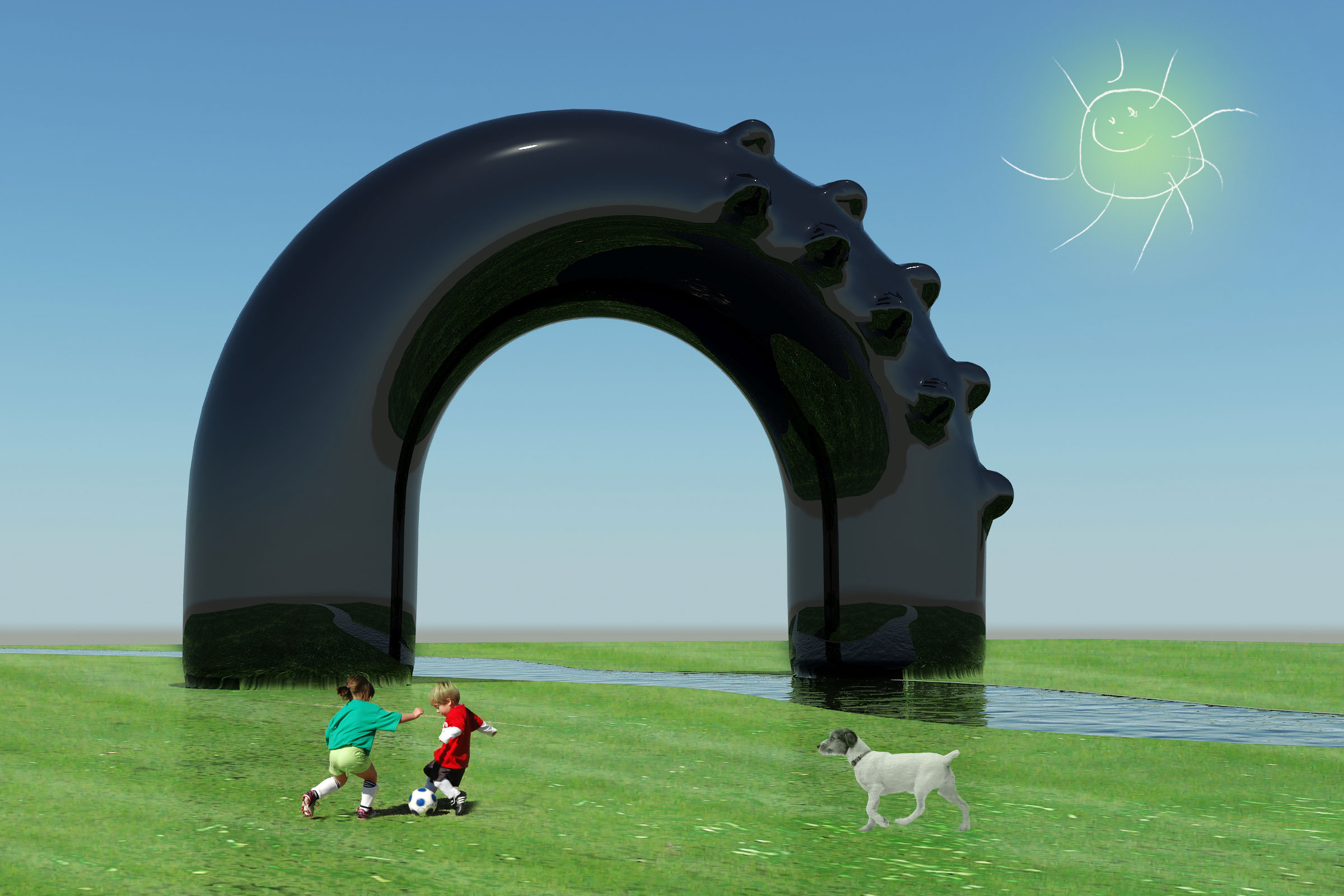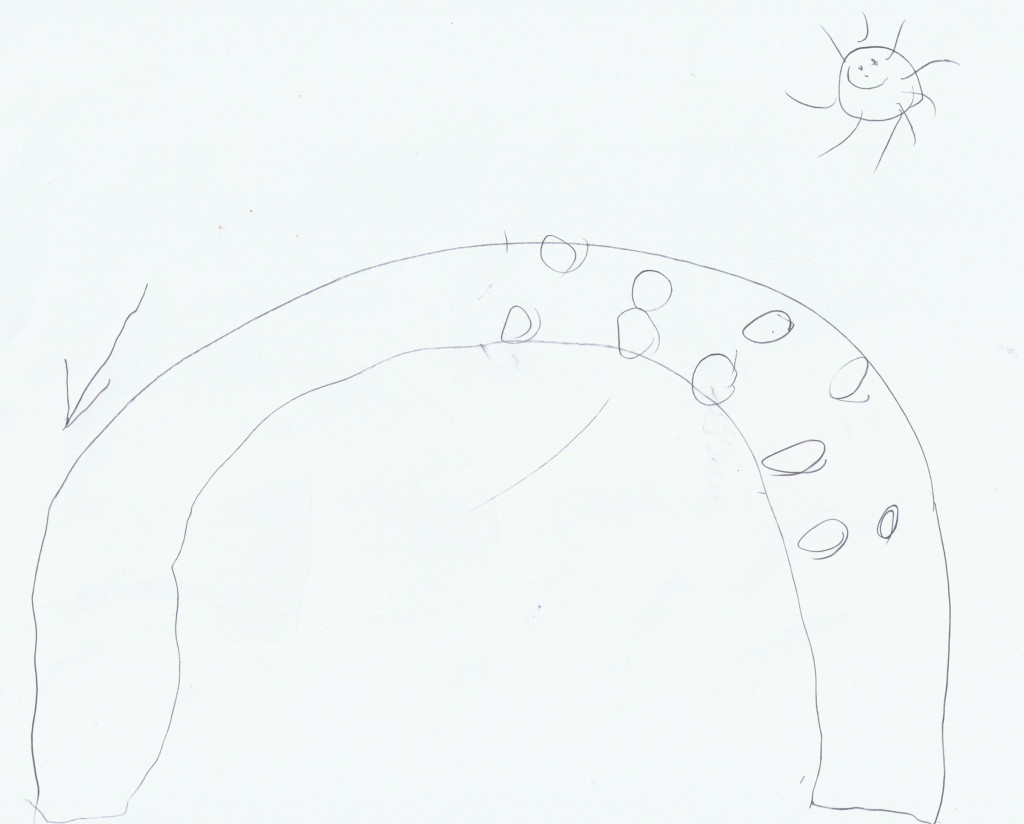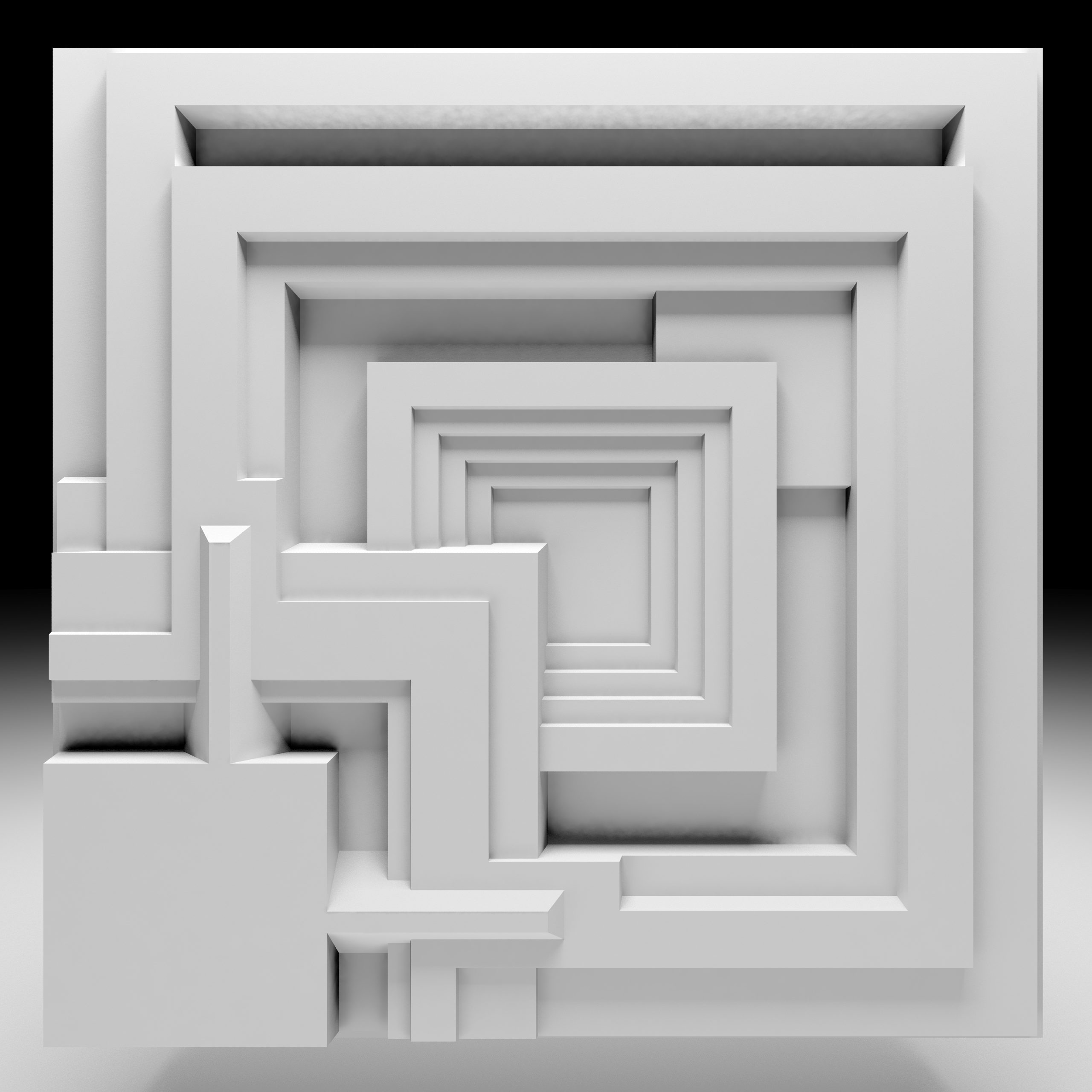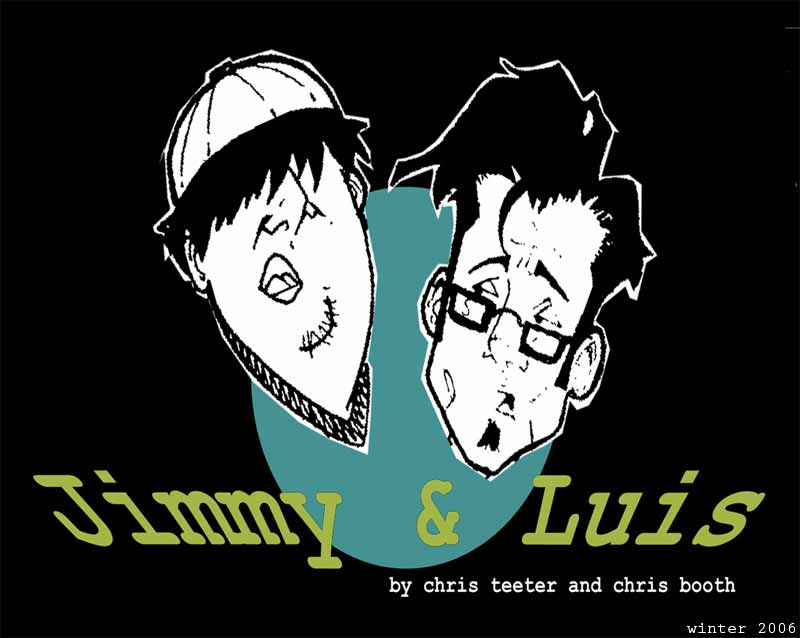
Madison’s Bridge
In theme with the study of dream memories, I have created a computer rendering of a sketch produced by Madison (my oldest daughter) who is almost 5 years old. The colors, materials, river, and characters in the rendering were all as per Madison’s spec. The original sketch is shown below. The circles were interpreted as holes or windows by me. Madison quickly rejected this interpretation and with strong conviction explained that the circles were actually bumps and there were exactly nine (9) of them on each side. Although Madison was clearly conscious of her design decisions I hardly expected a design explanation that could be upheld in a design jury at university or professional level. Madison often wakes up rambling about her dreams. Occasionally I ask her what it all means and she just looks at me funny wondering why I would ask such a silly question.
In John P. Eberhard’s book “Architecture and The Brain”, a brief overview on neuroscience and architecture in Chapter 5 “Memory of Places and Spaces” he summarizes various theories about what researchers believe dreams to be: “These researchers suggest that dreams, or at least some of their more bizarre features, are the associations and memories “thrown out on the desktop of our minds” at random. Our brains apparently make up stories to connect these pieces of memory into some sort of scenario that we can accept.” 1
In this sense we could think of dreams similar to macromolecular agency as explained by Daniel C. Dennett in “Kinds of Minds”: “Through the microscope of molecular biology, we get to witness the birth of agency, in the first macromolecules that have enough complexity to perform actions, instead of just lying there having effects. Their agency is not fully fledged agency like ours. They know not what they do. We, in contrast, often know full well what we do. At our best – and at our worst – we human agents can perform intentional actions, after having deliberated consciously about the reasons for and against. Macromolecular agency is different; there are reasons for what macromolecules do, but the macromolecules are unaware of those reasons. Their sort of agency is nevertheless the only possible ground from which the seeds of our kind of agency could grow.”2
If dreams were intentional or in other words we were consciouss and intentional in their creation, dreams would make sense and comprehending their meaning would be simple, or at least presumed to be so by method of reason.
F.W.J. Schelling’s philosophical project “System of Transcendental Idealism (1800)”, apparently an incomplete philosophical project, discusess at length the dialect between the unconsciouss and the consciouss, the objective and the subjective, and multiple layers of self becoming objective and subjective. Schelling is continuing the project of transcendental idealism in the tradition of Kant and Fichte. For the most part the book is a very hard read and understandably so. What is actually being attempted at being expressed in this text could be used as an incomplete blueprint for the creation of artificial intelligence. At the end of Schelling’s book, Part Six, he attempts to offer a ‘universal organ of philosophy’ in the form of art and its product. This art product contains:
“This unchanging identity, which can never attain to consciousness, and merely radiates back from the product, is for the producer precisely what destiny is for the agent, namely a dark unknown force which supplies the element of completeness or objectivity to the piecework of freedom; and as that power is called destiny, which through our free action realizes, without our knowledge and even against our will, goals that we did not envisage, so likewise that incomprehensible agency which supplies objectivity to the conscious, without the cooperation of freedom, and to some extent in opposition to freedom (wherein is eternally dispersed what in this production is united), is denominated by means of the obscure concept of genius.
The product we postulate is none other than the product of genius, or since genius is possible only in the arts, the product of art.
The deduction is concluded, and our next task is simply to show by thoroughgoing analysis that all the features of production we have postulated come together in the aesthetic.
The fact that all aesthetic production rests upon a conflict of activities can be justifiably inferred already from the testimony of all artists, that they are involuntarily driven to create their works, and that in producing them they merely satisfy an irresistible urge of their own nature; for if every urge proceeds from a contradiction in such wise that, given the contradiction, free activity becomes involuntary, the artistic urge also must proceed from such a feeling of inner contradiction. But since this contradiction sets in motion the whole man with all his forces, it is undoubtedly one which strikes at the ultimate in him, the root of his whole being – the true in-itself.”3
Only through the production of art can the conscious mind arrive at defining the unconscious inherent will (urge) of an individual and discover the unknown. This is applicable to both the individual and society. Society is best perceived in the form of agencies known as the economy or the internet (social media). The unconscious current of existence is always one step ahead of the conscious. The only method for becoming conscious of the unconscious is the production of art towards an aesthetic. All material productions are works of art ultimately. Production may also include the representation of thought in the form of text or drawings. The creative act is the attempt at producing a definition of the unknown aesthetic by employing intentional methods for knowing – methods that can be communicated.
Dreams appear to the conscious mind as an aesthetic memory. To produce a dream or even a fleeting thought or vision is to create a work of art that propels the indvididual or society closer to the unknown current of existence – progress. To produce requires work.
1 – Architecture and The Brain, John P. Eberhard, Ostberg, 2007: page 107
2 – Kinds of Minds, Daniel C. Dennett, Basicbooks, 1996: page 20
3 – System of Transcendental Idealism (1800), F.W.J. Schelling, University Press of Virginia Charlottesville, 1978: page 222





This Post Has 0 Comments